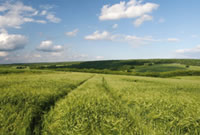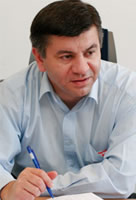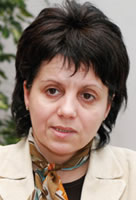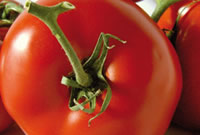Promised land
Agriculture in Romania may have the worst rural infrastructure in Europe, but for the bold, this only offers potential. ‘The Diplomat’ analyses country life
 The drive towards the farm is littered with dogs.
The drive towards the farm is littered with dogs.
Our car hits a bump in the road and we look back to check what we have hit. But it is okay. It is just another dog – already dead. This is the fifth, each one in various stages of decay, we have encountered on one single stretch of road.
This is the countryside, only 30 km south of Bucharest, on the way to Oltenita.
Pulling up to a farm, there is a huge billboard outside declaring: ‘Project funded by SAPARD’ – the EU’s pre-accession payments agency still making itself as visible as possible. But the sign seems worn and tired by the climate.
We open the huge wrought iron gates of a former state enterprise and then drive to an orange villa, past rows of plum and apple trees. Tied up with metal chains outside the offices are two large Romanian shepherd dogs and, on the hills overlooking the farm, roam sheep.
During the 1980s, state agricultural enterprise Buciumeni had 6,000 hectares with 11 farms, an orchard, two large vegetable plots, a plantation for seeds, vineyards, a farm for strawberries, 605 cows, 6,000 sheep and chicken and pig breeding. It was one of the largest export farms in the area.
But now, the farm is less than half the size with only a few orchards and 300 sheep. Buciumeni has suffered it all: 15 years of botched Government U-turning between private and state interests, bad restitution decisions, not to mention unresolved and expensive legal disputes and a failure to gain credit from banks. This was before nature played its evil tricks: the property is in Lunca Dunarii [Danube's meadow], which meant the recent floods swamped the land.
Now the contracts keeping the farm going are co-operations with multinational plant breeders to grow wheat and barley seeds.
“It is not worth having a farm today in Romania,” says Ion Alexandru, farmer at Agronomix Buciumeni. “There isn't any cooperation between farmers and authorities. I am disappointed and I have had enough.”
The Government’s Agentia Domeniile Statului (ADS), an agency which administers state land, rented this former Communist farm to Ion Alexandru and his partner in 2000. This contract saw the farmers assume the property’s debts and the benefits.
Alexandru's firm Agronomix spent around 1.5 million Euro in shares in the plot, paying off the farm debts and making required investments in the land. At that point, the farm covered 3,000 hectares, but this halved to 1,500 ha when half the land was restituted to a pre-Communist owner.
However, Alexandru did not gain back the money he had spent on the land he lost – cash he had to invest to win the contract from the Government to run the farm in the first place.
Therefore, he bought land he had lost back from the pre-Communist owner and cancelled his contract renting the rest of the land from the Government's ADS in 2004.
“From that moment, our only contact with ADS was through our lawyers,” says Alexandru.
| “It is not worth having a farm in Romania today. There isn't any cooperation between farmers and authorities,” Ion Alexandru, farmer |
Every year, ADS establishes an amount of money farmers must pay per hectare for the right to produce in former state enterprises. Regardless of what he is growing on the land, the farmer must pay ADS the price for 600 kg of wheat per hectare per year. But the wheat price is set by the commodities exchange from London, plus VAT.
The wheat price in Romania has been half that of London's commodities exchange in recent years. “We end up paying almost double what we could make,” says Alexandru. “The Government gave no explanation for this. We just receive an invoice.”
As well as Agronomix Buciumeni, there are two units that also cancelled the contracts with ADS in 2004 in Calarasi county.
For three years, these surfaces have not come under the plough. Many other farmers are ending their cooperation with the Government and much land is lying empty.
Alexandru now wants to sell the farm at six million Euro for 2,500 hectares, buildings and animals.
He is not upbeat about the new EU policy. “Now we have to plan everything in advance - even how many litres of milk the cow has to provide and how many we can sell,” he says. “I think the EU legislation is worse than what Ceausescu was doing.”
Backward looking
Romanian agriculture is backward and inefficient. According to one businesswoman from an agrochemical firm, Romania has the worst rural infrastructure in Europe. Around 32 per cent of Romania is working in agriculture. Legal workers in the sector in the EU run to seven per cent and one per cent in the USA.
“The EU, which has four-and-a-half times fewer people than Romania employed in agriculture, produces as much as it needs, while Romania is importing vegetables and fruits,” says Laszlo Klarik, general manager for the Payments Agency for Rural Development and Fishing.
A modern agricultural system will mean fewer working in agriculture. Klarik does not believe this will be as low as seven per cent, but close.
Despite this, thousands of people, particularly the young, are leaving the country to work in the city. From the existing farmers, there are few left with agricultural skills to tend the land efficiently.
The EU is weighing in with 400 to 500 million Euro each year in direct farm supports. Whether any of this money will reach rural areas depends on the quality of the applications. “It is too early to predict how much of this support will be absorbed in Romania,” says head of the EC’s Representation Office in Romania Donato Chiarini.
| One third of Romanians work in agriculture, compared to seven per cent in the EU |
Romania has six million hectares of forests and 15 million hectares of agricultural land, 9.4 million of which is arable. Much of this land is suffering from the after effects of floods, pollution, drought and land dispute. “There isn't a real figure for how much land is in use,” says one agricultural professor. “Everyone is only guessing.”
Romania: country profile |
|
No. of subsistence farms: three million No. of semi-subsistence farms: one million No. of commercial farms (average size 350 hectares): 23,000 Cost of agricultural land: between 300 and 1,500 Euro per hectare Muntenia and Oltenia: the nation’s breadbasket. Fertile land Grows corn, grain, barley, oil seed rape and sunflowers Moldavia: less fertile than Muntenia and Oltenia Grows corn, wheat, fruit, grapes and potatoes Banat: good soil and greater rainfall than southern Romania Farms grain, fruit and vegetables. Pigmeat firm Smithfield plans to invest around 800 billion Euro in region Transylvania: rugged terrain. Hills are good for horticulture and animal rearing, mountains for animal grazing |
What are the challenges facing Romanian agriculture?
Come together: Encouraging, not forcing collective farming
Following the 1989 Revolution, the Government decision to fragment consolidated land was the biggest damage inflicted upon agriculture. The state broke apart its cooperatives and gave land to small plot-owners. This broke some of the efficiency and strength of the farms.
 “Property rights should have been returned but the lands, goods, headquarters, stables and the farming equipment should have been kept,” says Dan Farcas, marketing manager at Aectra Agrochemicals. “They were destroyed and now we are concluding that we need a merger.”
“Property rights should have been returned but the lands, goods, headquarters, stables and the farming equipment should have been kept,” says Dan Farcas, marketing manager at Aectra Agrochemicals. “They were destroyed and now we are concluding that we need a merger.”
Now the medium area of farms in Romania is 2.5 ha compared to 70 ha in France.
Fragmented owners are a nightmare for agribusiness. Portuguese agribusiness firm Martifer controls 12,000 hectares of land, for which it has to draw up almost 10,000 contracts with each farmer. “It’s a lot of paperwork,” says business director at Martifer subsidiary Prioagricultura, Bruno de Sousa. “It's been the main development issue for us.”
State secretary at the Ministry of Agriculture, Nicolae Lazin, says the Ministry's target is to create entrepreneurs to “coordinate the activity of a large number of small farms” to take on the market. The Ministry wants to transform half the three million subsistence farms into successful commercial operations by 2017.
However, while the EU may supply support, a Government cannot create entrepreneurs, only facilitate their emergence. And if they are not there to begin with, big businesses will take over.
Giant plots are the best ways forward for farmers, argues Farcas, as this increases their bargaining power with buyers.
“A possible example for Romania to follow is the north and south America where there are big landowners,” he says. “If the farmers have big surfaces then their powers of negotiation are higher. Those who are too small and don't have enough cash will sell their products at a cheaper price. Our most important clients, who are also profitable, have surfaces from 500 to tens of thousands of hectares.”
It is also hard for authorities to persuade farmers to consolidate their land without invoking the ghost of forced collectivisation. “Romanians are afraid of cooperatives, but they have to understand that this is in their own interests,” says Klarik. “On 0.5 to one hectare you can't do modern agriculture They must join, maybe not for the mutual property - but at least for mutual agriculture exploitation, to be competitive.”
The EU says that Phare programmes have developed workable schemes for consolidation. Now the Ministry’s Land Consolidation Directorate is applying the results of the pilot schemes across Romania, likely to be assisted by the World Bank.
Troubled waters
Southern Romania suffers from both droughts and floods. The problem is an ageing 1970s irrigation system which takes water from the Danube to the fields in its basin. This needs modernisation to reduce droughts and increase yields, by regulating the amount of water land receives. “If Romania had the right water conditions it would be a beautiful country to do farming,” says De Sousa. Irrigation is where experts believe the Government should channel large scale EU infrastructure money and, if not, private capital should step in.
| “If Romania had the right irrigation conditions it would be a beautiful country to do farming,” says Bruno De Sousa, Martifer |
Which are the farming sectors that offer potential?
Top of the crops: Improving cereal cultivation
Cereals are mostly grown on Romania’s southern plains. But last year’s crop scored a recent low and the area suffers from droughts and pest infestation.
“Farms that are producing cereals are not a good business in Romania today,” argues one professor. Despite fertile land rich in organic substances, this land produces, on average, half the western yield of wheat per hectare. It needs to be extensive in area, but intensive in exploitation.
Arable land use is one of the most sustainable in Europe, argues agricultural counsellor, Sapard and rural development, Achim Irimesu. “There is very little or zero use of chemicals,” he says. “The problem is most farms’ lack of efficiency.”
This is all great news for the more intrepid investor.
 “Romania is one of the few countries in Europe were the agriculture market is growing,” says Bayer Crop Science Romania country manager, Laurent Perrier.
“Romania is one of the few countries in Europe were the agriculture market is growing,” says Bayer Crop Science Romania country manager, Laurent Perrier.
The cereal market has an annual value of 100 million Euro. Some forecasts state the market will be worth 500 million Euro by 2017. Tough competition could mean small farmers cease to exist and sell out. Again this means huge opportunities for investors.
“Romania has a good chance to develop as Europe’s oil, grain and seed production centre, which will certainly attract investors in the traditional agricultural sector and increasingly so in the biofuel sector,” says Vittorio Agostinelli, Pioneer Hi-Bred’s Field sales operations manager for Romania. “With increasing production efficiency, Romanian farmers will compete on the European market, cost efficiency, time efficiency, productivity and quality will define how their products will be sold.”
There may also be a natural migration of agri-business to the east, as western countries' outsource farming to eastern Europe. Already this is happening with parts of Africa, so there may be tricky competition.
“Land is not premium in the west,” says Paul Claxton, director general plant product and seed firm Syngenta Romania. “There is a lot of environmental pressure, people wish to see flowers and golf courses instead of agriculture so there's a natural shift from the west to the east in agriculture and Romania has a big potential to develop in this field.”
Around one third of Romania's land is still unexploited.
“There is a big potential for Romania to develop in maize and rape,” argues Claxton. “Also in vegetables. Romania could be a source of vegetables for western investors the likes of Carrefour.”
European rules: System in a mess
Agriculture does not seem up to cohere with new European Union regulations in seed cultivation and the kinds of products farmers are allowed to buy and use. This could hold up development of the sector.
Because of the large numbers of plots, up to 35 per cent of corn farmers do not use certified seed and this can disqualify them from receiving financial support.
 “In Romania corn cultivation is over 2.5 millions hectares but only 65 per cent of the crop uses certified seed,” says Doriana Nitu, general director of corn, sunflower and sugar beet seed manufacturer KWS Romania.“There should be a national mechanism to influence farmers to use certified seed.”
“In Romania corn cultivation is over 2.5 millions hectares but only 65 per cent of the crop uses certified seed,” says Doriana Nitu, general director of corn, sunflower and sugar beet seed manufacturer KWS Romania.“There should be a national mechanism to influence farmers to use certified seed.”
Nitu argues that the main disadvantages of Romania agriculture are the lack of financial support and the absence of a standard price for a product. “This makes it harder for a farmer to decide what he needs to cultivate on his land, because he doesn't know what will bring profit,” she argues.
Following Romania's unrestricted development of a massive GMO soya market – which saw the country boast the largest number of hectares (100,000) of any European country under GMO cultivation in 2005 – the EU weighed in with a new ban. Now no production of genetically modified (GM) seeds is allowed in Romania.
“Although [the EU’s] Agriculture Directorate General is continuously reviewing the Community policy with respect to GMOs, at present there are no proposals to change that being debated,” says EC’s Donato Chiarini.
Animal panic: Pastoral farming faces paperwork hell
Romania needs to have in place an accurate animal identification and registration system, stating who owns which animals, where they journeyed around the country and who buys and sells them. “This is an essential prerequisite for rural support measures to be implemented and verified,” says Chiarini.
But one professor states there is a crisis in animal rearing. Many farmers do not know the age or breed of their animals. They also breed two types of cows, pigs or geese without discrimination. “Traditional breeds have been distorted because strange combinations were made,” says the professor.
The animals then lose their main utility: pigs are bred to produce low-value fat rather than high-value meat, while cows fail to produce sufficient quantities of milk.
The dairy industry is fragmented and inefficient.
| Romania has more milk producers than all the 25 existing member states combined |
Romania has more milk producers than all the 25 existing member states combined. “This will create enormous pressures on its administration and control of the milk quota system that operates in all EU states,” says Chiarini. Because of EU hygiene and marketing regulations, many semi-subsistence dairy farmers are likely to lose their chance to sell surplus milk production.
Plant energy: Making fuel from oil seed rape
All European countries have to increase their quota of green energy by 2010 to 5.75 per cent of all its energy consumption - including fuel made from sunflowers or rape seeds. Romania has the perfect climate and a cheap labour force to harvest these crops on a large scale. Optimistic analysts have even posed the idea that Romania could be a net exporter of biofuel sources to other EU countries to fulfil their green quotas. “Biofuels in general offer significant potential for Romania, not just from oil rape seed but also from other crops including commercial timber production,” says Chiarini.
Ken Thomson, Professor Emeritus at the University of Aberdeen and co-editor of ‘Romanian Agriculture and Transition toward the EU’ believes biofuels look promising for Romania, due to its background in arable farming and its expertise in the oil industry.
Portuguese group Martifer is investing over 40 million Euro in an oil refinery in this sector and oil giant Rompetrol will pour in 19 million Euro to a biofuel production facility. There is also a strong business case for biodiesel, which is coming down in price as the cost of oil rises above 60 dollar a barrel.
“There should be a policy for encouraging the cultures where we are more competitive than other countries, like rape,” says Farcas. “Rape might be a life-buoy for the Romanian farmer. Europe does not have enough raw materials for biodiesel and Romania has a big surface area of unexploited land. Rape cultures have doubled in the last two years and this year will cover almost 350,000 hectares.”
But some are less optimistic about its export potential.
“Bear in mind Romania covers only 40 per cent of its fuel consumption from national resources,” says Irimescu.
Tomato threat: Traditional tastes face restrictions
 One of the best Romanian products are tomatoes - these lush and tasty varieties receive praise from foreigners bored of the mass-produced tomatoes, with their rubbery exteriors and soapy flavour. This is no accident.
One of the best Romanian products are tomatoes - these lush and tasty varieties receive praise from foreigners bored of the mass-produced tomatoes, with their rubbery exteriors and soapy flavour. This is no accident.
“Romania is privileged by the 45 degree parallel [a line of latitude] creating an equilibrium between acids and sugars,” says Dow Agroscience Romania country manager Gheorghe Botoman. “This is the main reason for the nice taste of our fruits and vegetables.”
But EU regulations, along with an increasing tendency towards hypermarket shopping, could bring a threat to traditional seasonal products like tomatoes.
“The European model of agriculture, more intensive than in Romania, represents an important risk for Romania’s traditional products,” says Irimescu. “The Romanian Government needs to think of solutions that will not affect the high quality products in Romania.”
History of error:
Romanian agriculture in the 20th century
Romania was never an agricultural paradise. Before 1945 farm-land was small in scale and inefficient. Romania’s landscape was full of tiny parcels of land that were difficult to support modern technology.
Following 1945, the Communists forced collectivisation of land and peasant plots on the Stalinist model. They introduced a propaganda campaign against the rich peasants (or kulaks) similar to that of the USSR as a method of uniting the mass against a common enemy, by exploiting their envy of the wealthy.
Many peasants then became partners in stealing land and livestock from landowners, with an estimated 17,000 kulaks facing eviction and resettlement. From 1946 until 1962, 80,000 peasants resisting collectivisation were also put into prison.
There were three farming structures set up: state farms, private farms and collectives. The Ministry of Agriculture directed what was to be grown and where.
There were 2.6 million agricultural workers in the 1980s. This was 2.8 per cent of the labour force. Of the land, 17 per cent was in state farms, 75 per cent in collective farms and eight per cent private.
| “The main effect of the agricultural strategy pursued by Ceausescu was to destroy the self-confidence of farm producers,” Ken Thomson, Professor Emeritus, University of Aberdeen |
“The main effect of the agricultural strategy pursued by Ceausescu was to destroy the self-confidence of farm producers,” says Prof Ken Thomson, University of Aberdeen. “They could no longer rely on stable systems of farm structures, management and markets, all of which were affected by an emphasis on central control and national self-sufficiency almost regardless of cost.”
Following 1989, the Ministry of Agriculture faced further mismanagement and incompetence. There was a failure to compromise the quota and support system of providing security to agricultural business with the realities of the encroaching free market.
The state restored the property rights to former owners and peasants working the land into about four million small farms, most of them subsistence, and about one million semi-subsistence farms. But there was no efficient farming tradition that these liberated farmers could follow. “Generations of farmers had been destroyed by Communism,” says farmer at Arasol Teleorman, Ovidiu Siteavu. “Romania does not have a farming heritage.” This was combined by with bad application of the law and poor regulation by the state, meaning farmers found it hard to make profits.
During the 1990s, the state controlled the prices of agriculture yields, but at the same time the costs of seeds, chemical and pesticides increased constantly. More and more farmers began to leave their jobs and abandon farming between 1991 and 1996.
“During the post-1989 transition, and the restitution of land to original owners, it has been hard to recreate a sense of self-reliance, and trust in commercial and community organisations,” says Prof Thomson.
Europe to the rescue
What new EU policies will mean for local farming
Criticised as either the saviour or destroyer of European agriculture – and both as Socialism by the back-door and effective state-sponsorship, the Common Agricultural Policy (CAP) has come to Romania.
But this year Romanian farmers will only see one quarter of the cash western Europe receives. The state budget will fund a further 30 per cent, so that Romanian farmers will receive 55 per cent of the total support given to EU farmers.
CAP ensures that efficient farms stay in the black whatever the business climate or weather forecast by giving cash incentives to EU producers and taxes on imports to the EU. The EU buys farm products when their market price falls below an agreed price. This can lead to a surplus – such as butter mountains and wine lakes – but these have been decreasing since the 1980s.
However Romania will have a hard task in competing with other countries in the 27-member bloc. “We are in direct competition with farmers from France which have support of 400 Euro per hectare when a Romanian farmer has 50 Euro,” says Farcas. In 2005 CAP accounted for 46 billion Euro – 46 per cent of the total EU budget. The largest proportion went to arable land and an increasing amount to rural development. This funding of rural reform outside of farms, such as forestry, tourism and environmental sustainability, should increase from 13 per cent to 25 per cent by 2010.
“CAP will have an immediate and long term benefit due to its Rural Development in Romania,” says Irimescu.
Romania is developing a register of all farm holdings that can potentially benefit from CAP’s support which should be ready this year. “Because the Romanian Government has set a very low threshold for qualifying for farm supports [a minimum farm size of one hectare] it seems likely that up to 1.5 million holdings will be registered,” says Chiarini.
But CAP will create a framework which has been tried and tested and works. “This is likely to benefit larger and more progressive arable farmers, including part-time farmers willing to undertake ‘rural development’ projects,” says Prof Thomson. “In the longer term, access to feed should help pig and poultry farmers and processors in Romania, if they can achieve high standards of efficiency, such as via scale, and hygiene.”
| Rural development could receive up to eight billion Euro between 2007 and 2013 from the EU |
Diversify or perish
Non-traditional agricultural enterprises are the key to profits for farmers, argues the EU. Eight billion Euro is available from 2007 to 2013 under the Rural Development Programme to help kick-start new activities in Romania. As well as rural tourism, such as guest houses and horse-riding, in Romania such enterprises include handicrafts, bee-keeping, frog and snail growing and cultivation of mushrooms and medicinal and aromatic herbs.
Prof Thomson says that, for farms to diversify, the country needs a healthy general economy which generates incomes capable of supporting demand for rural residence, transport and leisure.
The other alternative is fashionable tourism for foreigners. “This is usually restricted to particular areas with special landscape or wildlife attractions,” he says. “In Romania, its mountains for hunting and wildlife and the Danube Delta for bird life seem the more obvious regions, other than around Bucharest.”
Unfinished business
Romania’s delay in setting up a payments system for farmers was the hot topic of last year because failure to do so could have pushed back Romania’s accession to the EU by one year. In May 2006 the agency needed equipment, IT services, offices and 5,000 members of staff. The Government says that 4,600 are now employed at its new Integrated Administration and Control Systems (IACS), which coordinates 80 per cent of agricultural payments from the EU and state budget to farmers.
Now the agency needs to assess all the satellite pictures of agricultural land in Romania to check that the plots farmers claim they own are correct.
But this will cause a panic, estimate some insiders.
In the EU, agricultural land has a good clear block-or grid-iron structure with rectangles or squares. It is easy to estimate the area of the land. But in Romania the plots have a chaotic shape with curves and outlying elements: it is more like a surrealistic jigsaw than a chessboard. “To determine the area of the land is near-impossible,” says one agricultural professor. “I have no idea how they will succeed.”
Report by Ana-Maria Smadeanu,
Mihai Alexandrescu,
Michael Bird
